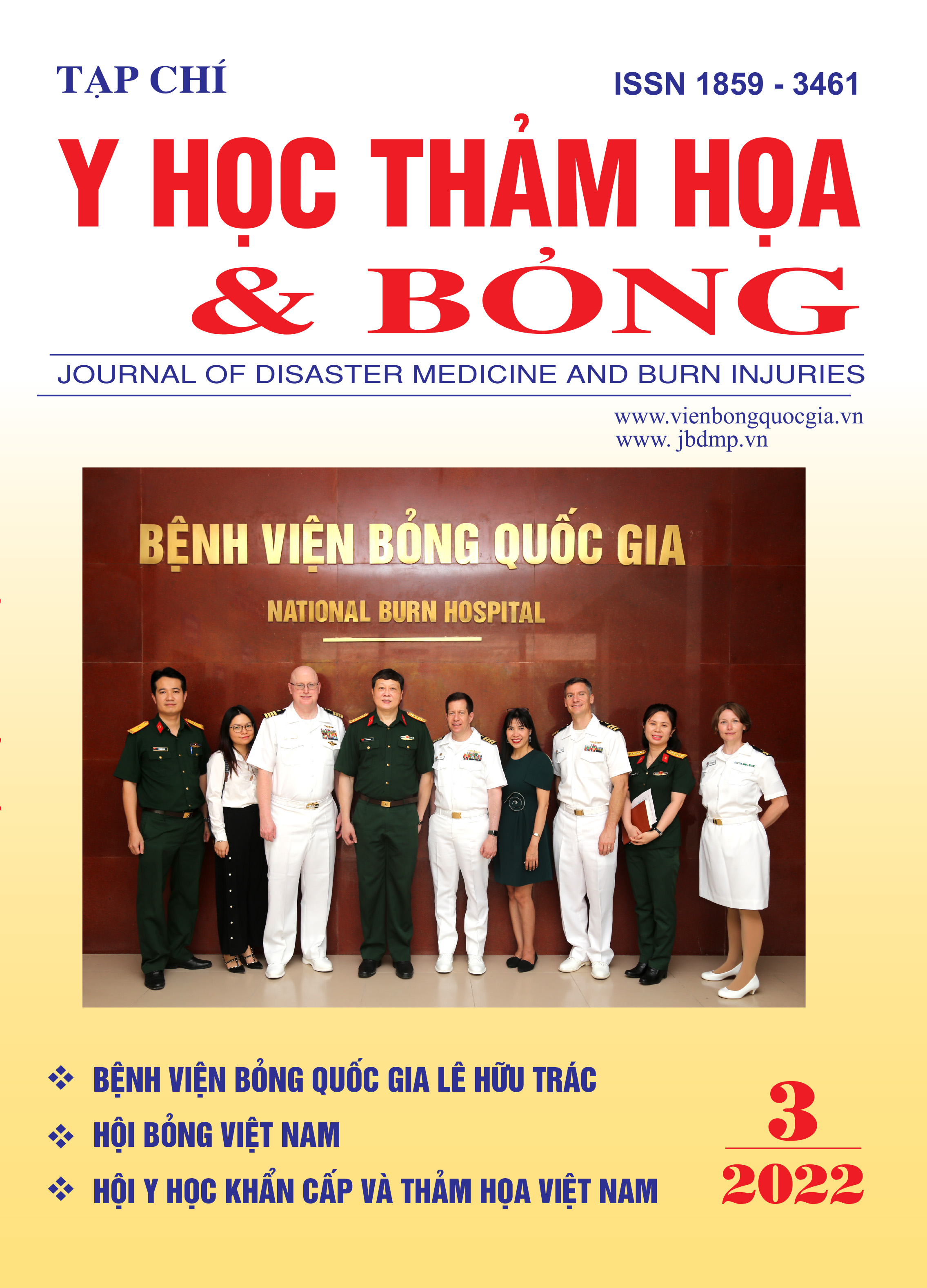Điều trị sẹo lồi bằng liệu pháp chiếu xạ nông sau phẫu thuật
Nội dung chính của bài viết
Tóm tắt
Sẹo lồi là một loại bệnh lý lành tính của da tuy nhiên do đặc điểm phát triển kéo dài, cùng với triệu chứng đau nhức, ngứa liên tục đã ảnh hưởng lớn tới chất lượng cuộc sống của người bệnh. Đến nay điều trị sẹo lồi hiện nay vẫn là một thách thức, tỉ lệ tái phát còn cao khi áp dụng đơn lẻ từng phương pháp.
Từ đầu năm 2021, lần đầu tiên tại Việt Nam, bệnh viện đã ứng dụng hệ thống chiếu xạ trị nông bề mặt với máy SRT 100 cho bệnh nhân sau phẫu thuật sẹọ lồi, ung thư da. Sau một thời gian áp dụng theo đúng hướng dẫn về sử dụng xạ trị bề mặt, chúng tôi đã thu được những kết quả rất đáng mong đợi. Sau đây chúng tôi xin trình bày một ca lâm sàng sử dụng chiếu xạ nông sau phẫu thuật sẹo lồi trong số bệnh nhân nghiên cứu.
Chi tiết bài viết
Từ khóa
Sẹo lồi, chiếu xạ nông
Tài liệu tham khảo
2. Ogawa R. Keloid and Hypertrophic. Scars Are the Results of Chronic Inflammation in the Reticular Dermis. Int J Mol Sci 2017; 18(3): 606.
3. Michael H Gold, Mark S Nestor, Brian Berman, David Goldberg: Assessing keloid recurrence following surgical excision and radiation, Burns Trauma 2020 Nov 14.
4. Akaishi S, Akimoto M, Ogawa R, Hyakusoku H. The relationship between keloid growth pattern and stretching tension: visual analysis using the finite element method. Ann Plast Surg 2008; 60: 445-451.
5. Ogawa et al. Diagnosis and Treatment of Keloids and Hypertrophic Scars-Japan Scar Workshop Consensus Document 2018, Burns & Trauma, (2019) 7:39
6. Nestor MS, Berman B. Consensus Guidelines on the Use of Superficial Radiation Therapy for Treating Nonmelanoma Skin Cancers and Keloids. J Clin Aesthet Dermatol. 2019 Feb;12(2):12-18. Epub 2019 Feb 1.
7. Ogawa R, Yoshitatsu S, Yoshida K, Miyashita T. Is radiation therapy for keloids risk of radiation-induced carcinogenesis acceptable? The. Plast Reconstr Surg 2009; 124: 1196-1201.
8. Muneuchi G, Suzuki S, Onodera M, Ito O, Hata Y, Igawa HH. Long-term outcome of intralesional injection of triamcinolone acetonide for the treatment of keloid scars in Asian patients. Scand J Plast Reconstr Surg Hand Surg. 2006;40:111-116.
9. Ogawa R, Miyashita T, Hyakusoku H, Akaishi S, Kuribayashi S, Tateno A. Postoperative radiation protocol for keloids and hypertrophic scars: statistical analysis of 370 sites followed for over 18 months. Ann Plast Surg 2007; 59: 688-691.
10. Lee, S.Y.; Park, J. Postoperative electron beam radiotherapy for keloids: Treatment outcome and factors associated with occurrence and recurrence. Ann. Dermatol. 2015, 27, 53-58. [CrossRef]
11. Kuribayashi, Miyashita, T, Ozawa, Y, et al. Post-keloidectomy irradiation using high-dose-rate superficial brachytherapy. J Radiat Res 2011; 52: 365-368.
12. Puri N and Talwar A. The efficacy of silicone gel for the treatment of hypertrophic scars and keloids. J Cutan Aesthet Surg 2009; 2(2): 104-106.
13. Ogawa R, Hyakusoku H, Akaishi S, et al. Intraoperative piercing for earlobe keloid. Ann Plast Surg. 2007;59:354-355.
14. Bischof M, Krempien R, Debus J, et al. Postoperative electron beam radiotherapy for keloids: objective findings and patient satisfaction in self-assessment. Int J Dermatol. 2007;46:971-975.
15. Yossi S, Krhili S, Mesgouez-Nebout N, et al. Adjuvant treatment of keloid scars: electrons or brachytherapy? Cancer Radiother. 2013;17:21-25


